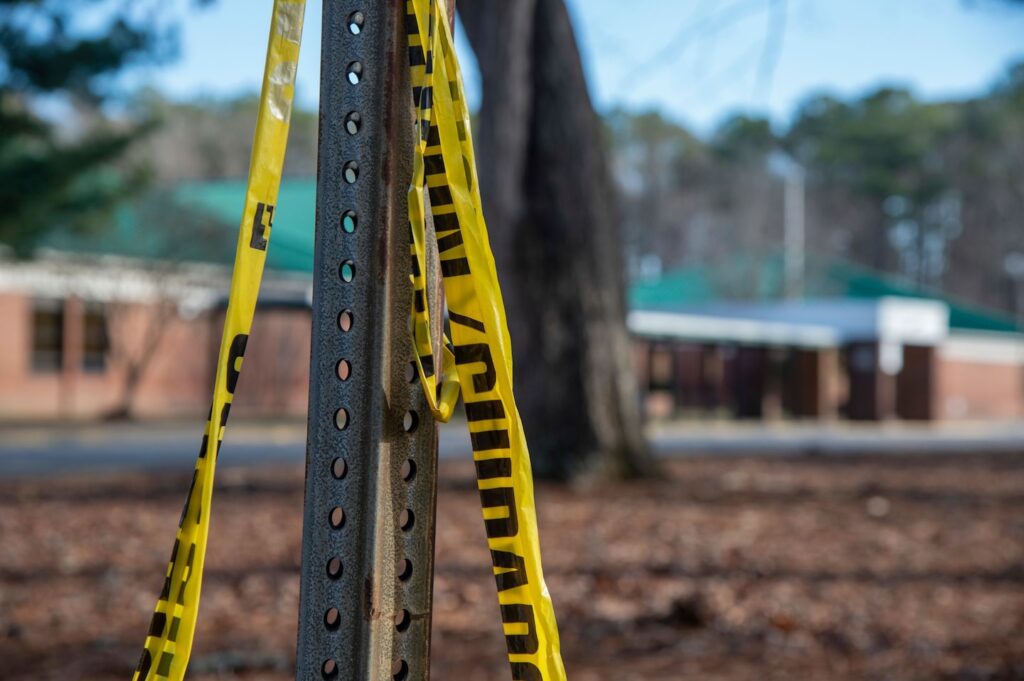
Let’s begin in 1866, when British papers reported the “sad case” of a five-and-a-half-year-old British boy named Samuel Case whose sister died after he struck her head with a brick. No charges were filed. The authorities deferred instead to the common-law principle holding that a child under seven cannot be criminally responsible.
Sometimes, when a very young child commits a violent act, we hold one of the adults around him responsible. In 1993, six-year-old Dedrick Owens of Morris Township, Michigan, shot and killed a classmate. Although Michigan, like Virginia, specifies no minimum age of criminal responsibility, Owens was not charged. The uncle who owned the gun pled guilty to manslaughter and was sentenced to prison.
As far as I’ve been able to determine, only one child as young as the accused Newport News shooter has ever been actually tried for murder. In May of 1929, six-year-old Carl Newton Mahan of Paintsville, Kentucky, used his father’s gun to shoot and kill a playmate after an argument — reportedly over a bit of iron both boys hoped to sell to a junk dealer. Within days of the crime, a local jury convicted the child of manslaughter.
The nation was horrified. When the judge sentenced Mahan to 15 years in the reformatory (to “discipline” his “vicious tendencies”), an outcry ensued. Critics argued that the parents, not the child, should be on trial. Clarence Darrow declared: “They’ll be trying cats, dogs and pigs next.” Others compared the outcome to earlier eras when small children had been hanged. The boy’s sentence was swiftly overturned on appeal.
Mahan’s case, like nearly every one on record, involves a child who kills another: a sibling, a classmate, a friend. But sometimes the victims are adults. The most notorious recent example is the case of Christian Romero, the 8-year-old Arizona boy who in 2008 was accused of using a .22 caliber rifle to kill his father and another man, a family friend. In exchange for the prosecution’s promise to drop the charge of murdering his father, the boy pled guilty to negligent homicide for killing the second man. After a long debate over what should be done with the boy, he was left in the custody of his mother under “intense probation and psychiatric care.”
For very young killers, treatment has long been seen as preferable to imprisonment. In 1925, seven-year-old Alsa Thompson confessed to having poisoned several people, including her nanny (who’d died the year before) and her sisters. Psychiatrists who examined the child determined that although some of the stories were fabrications, others were likely true. One expert testified that Alsa was “a menace to society.” Eventually she was placed “under the supervision of persons versed in the nursing of weakening minds back to health.”
What’s clear in sifting through these reports is that in addition to not knowing how to respond to such events, we’ve also long struggled to know how to prevent them. Let’s circle back to Carl Mahan, the six-year-old convicted of manslaughter in Kentucky in 1929. Across the country, editors wondered what would make a child do such a thing. As if in answer, the Associated Press reported grimly that the boy’s family did not go to church. Or was there some malign outside influence? Even back then, people blamed growing delinquency on Hollywood, but the boy’s father assured reporters that Carl had never attended the “picture shows.”
Nowadays, our response to such crimes often tends to align with our policy preferences. The problem is too many guns. No, it’s the collapse of the nuclear family. No, it’s violent music and video games. No, it’s in the genes.
I don’t know what the answer is. But as we struggle to find one, let’s remember that the horror of Newport News is nothing new — and although they almost always create a huge media firestorm, such events are quite rare. Such cases captivate us and disturb us. We’re horrified that a small child can kill, yet also repulsed by the idea that a small child would face trial — not to mention imprisonment.
I’m certainly not trying to suggest that violence by children is a phenomenon we have no choice but to accept. But let’s recognize that we’ve been seeking an answer for a long, long time.(1)
More From Bloomberg Opinion:
• One Simple Way to Reduce Gun Violence Among Children: Francis Wilkinson
• The US Is Making Progress on Gun Safety. Keep Pushing: The Editors
• Can Mass Shootings Be Foiled?: Sarah Green Carmichael
(1) Although many observers have recently discussed the case of a six-year-old named Retta McCabe who supposedly committed an 1897 murder in Troy, New York, I’m skeptical (for reasons too detailed to get into here) that the crime took place.
This column does not necessarily reflect the opinion of the editorial board or Bloomberg LP and its owners.
Stephen L. Carter is a Bloomberg Opinion columnist. A professor of law at Yale University, he is author, most recently, of “Invisible: The Story of the Black Woman Lawyer Who Took Down America’s Most Powerful Mobster.”
More stories like this are available on bloomberg.com/opinion

